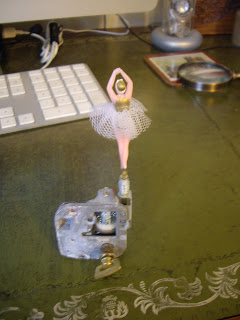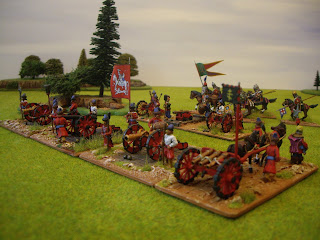54mm W.Britains Knights and Saracens, 28mm Muscovites, Ottomans, Tartars, Medieval Spanish & Portuguese, and other armies for the period 1300-1700
Wargame Rules
BLOG BACKGROUND AND WARGAME RULES
I have set up this blog for my wargaming interests in the Muscovite-Tartar Wars, Reconquista Wars, the Barbary Coast Pirates, and the early campaigns of the Ottoman Turks and Saracens. Some lesser known crusades will also be covered. Miniatures are mainly 28mm with a growing collection in 54mm. If my photographs serve to encourage others to complete their collections I shall be pleased. I will also be mentioning other sites with interesting collections on the above. Do join the 'Friends' if you like what you see.
I prefer to use my own rules which are kept simple and involve eight-sided dice. These allow for fast results with various types of weaponry. Morale dominates my games.
I have set up this blog for my wargaming interests in the Muscovite-Tartar Wars, Reconquista Wars, the Barbary Coast Pirates, and the early campaigns of the Ottoman Turks and Saracens. Some lesser known crusades will also be covered. Miniatures are mainly 28mm with a growing collection in 54mm. If my photographs serve to encourage others to complete their collections I shall be pleased. I will also be mentioning other sites with interesting collections on the above. Do join the 'Friends' if you like what you see.
I prefer to use my own rules which are kept simple and involve eight-sided dice. These allow for fast results with various types of weaponry. Morale dominates my games.
Friday, 1 December 2017
More Streltsy take the Field
Here is my latest regiment of Muscovite Streltsy, this is the 10th Moscow Regiment, in their orange coloured coats. Having completed this unit, it was time to have a December muster of Streltsy, rumours are circulating that the Tartars and Ottomans are planning a major raid for slaves and plunder during the Christmas festivities. I'm now busy re-organising the Muscovite command bases.
MGB
Wednesday, 15 November 2017
Wallachians or Dismounted Boyars
Among the newly painted castings is this unit of Wallachian warriors armed with halberds. These can serve as allies or enemies of the Ottomans, but I think they can also represent dismounted Boyars in any siege games involving the Muscovites, something different from the Streltsy.
MGB
Sunday, 12 November 2017
Muscovite Baggage Train with Guards
Having had a rest from painting miniatures during October (busy painting my house), got back to clearing some more Muscovites. For starters, have raised a baggage train, just needing a suitable rider to complete. And any spare figures I now pick up will be drafted into this Provincial Streltsy unit, uniformed in blue, which will be attached to the train for its protection. Expect several more posts very shortly as I typically like any new units to have their own posting on this blog.
No copyright infringement intended, I just love this 1909 painting by Appolinary Vasnetsov showing life in the City of Novgorod.
MGB
Sunday, 24 September 2017
Spanish Windmill 14th to 18th century
Finally decided to build a generic windmill, suitable for use in several periods. This is based on the type that appeared in Spain in the 14th century but continued as a popular style for many centuries more. The basic wood cylinder was originally part of a sugar container picked up in a charity shop for £1. My plan included, however, the incorporation of a Swiss music box that was previously part of my late mother's jewellery box, which also included a spinning ballerina. The tune being a fairly well known Spanish melody. With no intention of keeping the jewellery box, I could see a fun potential if I could include it in my windmill model; music and moving sails no less. Pleased to report, it works, and I can't help smiling each time I wind the key inside the cylinder. (Some of my 15th century Spanish are here making an appearance, presently in the process of converting my Italian Wars armies into Spanish and Portuguese.)
MGB
Sunday, 17 September 2017
Muscovite 'German' regiments 17th century
Strange how a frugal, waste-not policy can produce some interesting and useful ideas. A friend recently gave me a parcel of unwanted ECW figures. It comprised 22 pikemen in helmets, 7 pikemen in wool hats, and 9 musketeers in wool hats. Having removed the flash and undercoated them, I began to contemplate how they might be integrated, I'm not planning on an ECW collection. Several sources for the Muscovites referred to mercenary regiments of pike and arquebus that were raised in the 17th century. Styled 'German', but actually recruited from many nationalities, they were apparently dressed in typical European gear. My helmeted figures were a touch on the small scale but a piece of card sorted out that problem. I may have taken a slight liberty in granting the two pike blocks a generous measure of uniformity, but it is meant to be a fun collection. Later I will recruit some helmeted musketeers to go with them. Officially, these regiments mustered 600 pike and 900 muskets so units of 12 pike and 18 with firearms will suit my plans. The flags are based on some surviving 17th century examples. Concerning the remaining figures, I'm looking at converting them into a small force of Muscovite renaissance naval crew.
MGB
Thursday, 31 August 2017
Ottoman Asiatic Sipahi Cavalry
This unit of Ottoman cavalry has just received a complete revamp. New horses and steel lances have been provided, and the basic paintwork has been tidied up as well. These are my own castings and the headdress is based on several early 19th century prints, representing Asiatic sipahi. Whether it was the distinction of an officer, or a particular regional fashion is unclear but it certainly adds to my army, and appears quite different from those adopted by the Silahtar, Janissary, and Solack units.
MGB
Saturday, 15 July 2017
The Battle of Vozha River, 1378 (Muscovite)
Yesterday we fought a war-game based on the Battle of Vozha River. This action took place in 1378 between the Russian principalities (under George) versus the western branch of the Mongol Golden Horde (under Chris). Typically, detailed information on these period battles are slight at best. We do know that the Muscovite army, forming the bulk of the opposition to the Mongols, had found a system to hinder the local fording place, so it was now a difficult and potentially dangerous obstacle. It also appears, they did not seek to physically oppose the Mongols crossing the river, but chose to form up on some nearby high ground. And they won a great victory. Under our rules it took two full moves to cross the river, or one full move if routing or charging, but with the penalty of 50% casualties. We also obliged the Muscovite army to only activate when the Mongols had either charged or loosed off their arrows, this worked to encourage the period correct movements, but not the outcome. Here are some photos from the game. The Mongol horse archers were fast and effective, but the Russian foot on the hill, comprising spear and bow, were resolute. The Boyar cavalry acted on occasions with great bravery but losses eventually saw them rout. One success, however, was the Boyars on the flank destroying the Mongol baggage train, and this was recognised as important. And near twenty Mongols drowned when some units routed. The game concluded with surprising generosity, for the Mongols, some 23 Russians were allowed to vacate the field, the 34 Mongols having decided not to pursue. Lasting just over two hours, all agreed this was a fast play, enjoyable and exciting game, excepting my secret hope that the Muscovites would win!
MGB
Thursday, 13 July 2017
MORE MUSCOVITE BOYAR CAVALRY 1400-1650
In preparation for an upcoming game, finally got round to clearing another batch of Muscovite cavalry. Eighteen more are now ready for service, this now gives a total of 44, but I'm planning to increase several of the units with banner carrying figures, to a strength of sixteen per unit.
MGB
Friday, 9 June 2017
MORE MUSCOVITE ARTILLERY and TOWN GUARDS
Ive just completed two more artillery pieces and eight artillerymen for my Renaissance Muscovites. Many of the original crew have also been redistributed about the seven cannon. The multibarreled piece is a Hinchcliffe medieval model with renaissance wheels and 18th century limber horses. The large iron barrelled cannon is a Dixon 18th century model with renaissance wheels added. The Muscovite rulers were fair collectors of strange artillery weapons and I hope this has partly been recreated here, but expect some more for my earlier Medieval Muscovites. Also shown, is a small unit of town or provincial streltsy, I decided to use some cossacks for this battalion to distinguish them from the Moscow streltsy.
MGB
Monday, 29 May 2017
Almohad Moorish Cavalry form up for Battle
I'm working to build up my collection of Moorish/Arab cavalry and the Almohads now have two units of noblemen with their retinues. The colour coordination is somewhat exaggerated but I quite like this feature to my three, small Moorish armies. Many of their dynasties are known to have possessed 'mamluk' cavalry as personal guards in addition to civic stores of arms and armour so I am not going to rule out a measure of uniformity in some units.
MGB
Sunday, 7 May 2017
The Russian Streltsy regiments form up.
Another small battalion has just been completed and I thought it was time to have a field day with all the battalions. The new unit is the 12th Moscow regiment.
MGB
Saturday, 29 April 2017
More streltsy, the 11th Moscow Regiment
This unit of streltsy, or shooters, represents the 11th Moscow. It was not a particularly large unit so twelve figures will suffice to represent it. Another unit, the 12th will follow, and I also have a few spares which I will form into a baggage guard, perhaps another numbered regiment. Just arrived today was a package from Hinchcliffe which included twenty Wallachian halberdiers. The figures arrived flash free as they are new moulds. My intention is to paint them up as Russian guards or dismounted boyars for the 15-16th centuries.
MGB
Subscribe to:
Posts (Atom)


















































